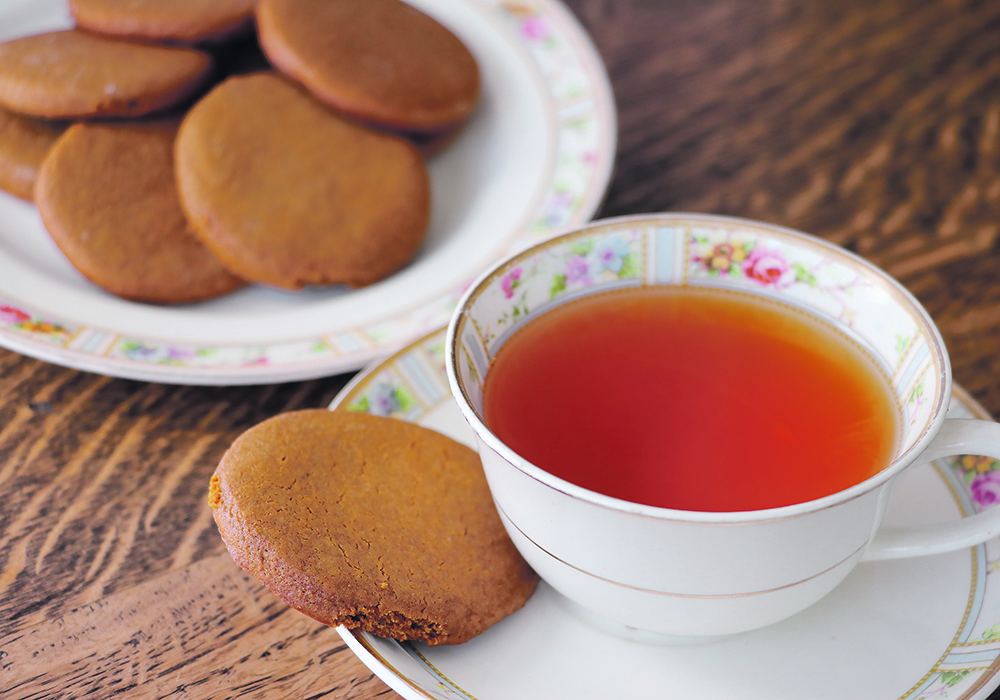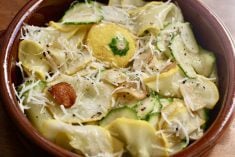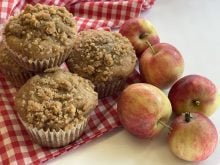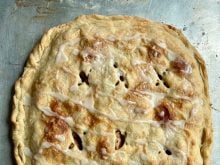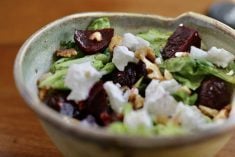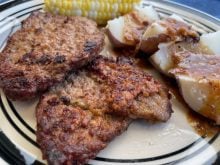The shortage of certain foods because of food rationing during the Second World War led to innovative recipes in many kitchens. Farm women and government home economists shared new recipe ideas and food saving preparation tips in newspaper columns, at club meetings and in cookbooks. Many unidentified readers submitted suggestions to The Western Producer that are found scattered throughout the newspaper’s “Mainly for Women” section.
Sugar greatly missed
Canadians were forced to change their food habits when coupon rationing of butter, cheese, milk, eggs, meat cuts, coffee, tea, preserves and canned fruits was introduced in January 1942. Of all the foods that were rationed, sugar was what people missed the most.
In 1943, the consumer section of the Dominion Department of Agriculture revised and expanded its Wartime Sugar Savers bulletin with sugar saving tips and recipes that used a minimum of sugar with a maximum effect.
Tips included:
- Don’t experiment with your sugar ration — use tested recipes.
- Cook dried fruits in the water in which they are soaked. Little or no sugar will be needed for sweetening.
- Use a plain sugar syrup or one from canned fruit to sweeten cold drinks.
- If sugar is used in hot beverage, stir until completely dissolved.
- Try reducing the sugar by two tablespoons when making pre-war baked desserts. They will taste just as good.
– From Wartime Sugar Savers, 1942.
“Supplies of sugar and butter may be scarce, but there’s no shortage of demand from the younger generation for the old-fashioned cookie and cake favourites,” wrote Marion Corral in her March 30, 1944, column. Her recipe for gingersnaps used only molasses.
Gingersnaps
- 1/2 c. butter or shortening
- 3 c. sifted all-purpose flour
- 1 tsp. salt
- 2 tsp. baking powder
- 1 1/2 tsp. soda
- 1 1/2 tsp. ginger
- 1 c. molasses
Sift flour, baking powder, salt, soda and ginger together three times. Heat molasses to boiling in two-quart saucepan. Remove from heat, add butter or shortening and stir until melted.
Cool. Add dry ingredients gradually and mix well.
Roll dough one-eighth inch thick on a lightly floured board, cut with cookie cutter and bake in a moderate oven, 350 F for six minutes.
Meat shortage
Casseroles were an easy way to extend meat rations. One suggestion was to layer potatoes and ground meat with onions and seasonings in a greased baking dish. Sieved tomatoes were added to the mixture, and breadcrumbs were sprinkled on top. Another idea was to cook small meatballs in bacon fat and add to cooked spaghetti. Canned or fresh tomatoes, green pepper and seasonings were then added. Both dishes would be baked in the oven until hot and bubbling. A little grated cheese could be added to the top.
Due to meat shortages, a canned spiced ham product called Spam became popular. It had been developed by the Hormel Foods Corp. in the United States in 1937. In Western Canada, the Burns Co. produced its own version of spiced canned ham called Spork. The processed, salty, canned pork was fully cooked and could be used sliced on sandwiches, pan fried or cubed and added to a casserole. It was ready to eat and stored well on the shelf.

Alternatives for butter
Another article recommended using fat drippings of various kinds instead of butter to make cookies, cakes and pastry. Drippings were the fat from cooking bacon, ham, roasts or chickens, while renderings were produced when meat was butchered and the large pieces of fat were melted down, such as lard from pigs.
Sour milk biscuits
This recipe also makes use of milk that has soured so that there is no waste.
- 3 c. flour
- 3 tsp. baking powder
- 1/2 tsp. soda
- 1 tsp. salt
- 3-6 tbsp. rendered fat or drippings
- 1-1 1/2 c. sour milk
Sift flour, measure and sift with baking powder, soda and salt. Cut in cold fat add sour milk and stir with a fork until dough clings in a ball. Turn onto lightly floured counter, pat down to a half inch thickness and cut with biscuit cutter dipped in flour. Place on baking sheet and bake in hot oven 450 F for 12 to 15 minutes. From the Feb. 3, 1944, Western Producer.
Egg substitutes
Eggs were a high protein food that was desired for the troops overseas. New dehydration technology made eggs easier to ship. To cook with fewer eggs in a recipe that calls for several eggs, such as when thickening a mixture like custards, pies, Blanc Manges and cooked salad dressings, replace one egg with one half tablespoon of cornstarch or one tablespoon of flour. In cakes, muffins, steamed puddings and similar mixtures, eggs act as a leavening agent as well as providing liquid. For each egg omitted, add one-half teaspoon of baking powder and two tablespoons of extra liquid. From Dec. 9, 1943.
Gelatin is a good substitute for egg whites when making macaroons, meringues and icing. Dissolve one tablespoon powdered gelatin in two tablespoons of hot but not boiling water. Stir until completely dissolved. Use to replace one egg white in a recipe. Icings made this way do not crack when dry, but “set with a good gloss”. From May 30, 1940.
Victory cake
A butterless, eggless, milkless cake that was commonly called a Victory Cake or the Canada War Cake became popular. It contained raisins and currents and was often baked in a metal coffee can so it could be included in care packages that were sent overseas. The cake actually improved with age, so it was moist and tasty when the care package arrived.
In her Sept. 14, 1944, column, Violet McNaughton, women’s editor of The Western Producer, encouraged readers to make this cake and gather other items to fill some of the 130,000 Christmas Ditty Bags needed for distribution to Canadian sailors.
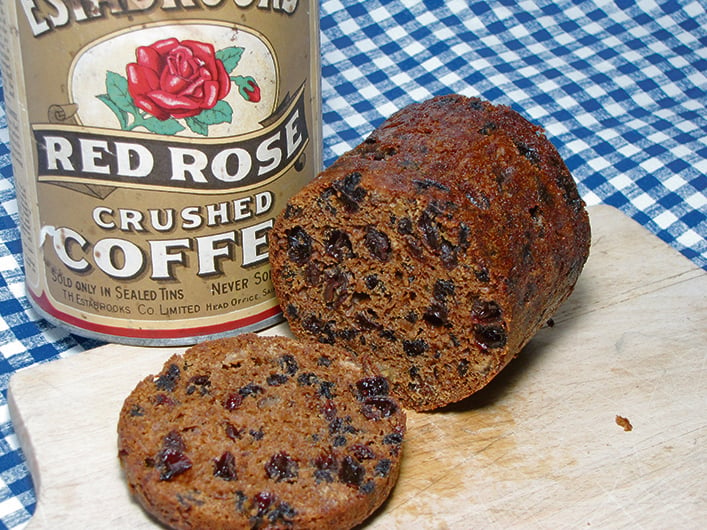
Boil together for five minutes:
- 1 lb. raisins
- 1/2 lb. currents
- 1/4 lb. peel
- 3/4 c. white sugar
- 3/4 c. brown sugar
- 4 level tbsp. shortening
- 1 tsp. cinnamon
- 1/2 tsp. nutmeg
- 1/2 tsp. salt
- 2 c. cold water
Let cool.
Add:
- 3 c. flour
- 1 tsp. baking powder
- 1 tsp. baking soda
Bake in a slow oven, 275 to 325 F, for three hours in one pound coffee tins. Makes three cakes.
When cold, put on lid and seal with adhesive tape or well gummed paper. This cake will keep for one year.
Pie making
To reduce the amount of fat needed for pies, Western Producer readers were advised to make a single crust pie and top it with a “flapper” topping.
- 2 tbsp. brown sugar
- 2 tbsp. butter
- 4 graham wafers, crushed
- 1/3 tsp. cinnamon
Rub together to make crumbs and sprinkle on top of hot pie or cornstarch pudding. Aug. 10, 1944.
A time-saving dessert
A ration and time-saver for war busy housewives was to place a layer of graham cracker crumbs in the bottom of a custard cup. Add a layer of applesauce and another layer of crumbs. If desired, a layer of custard may be placed on top with a maraschino cherry. October 1944.
Limiting food waste
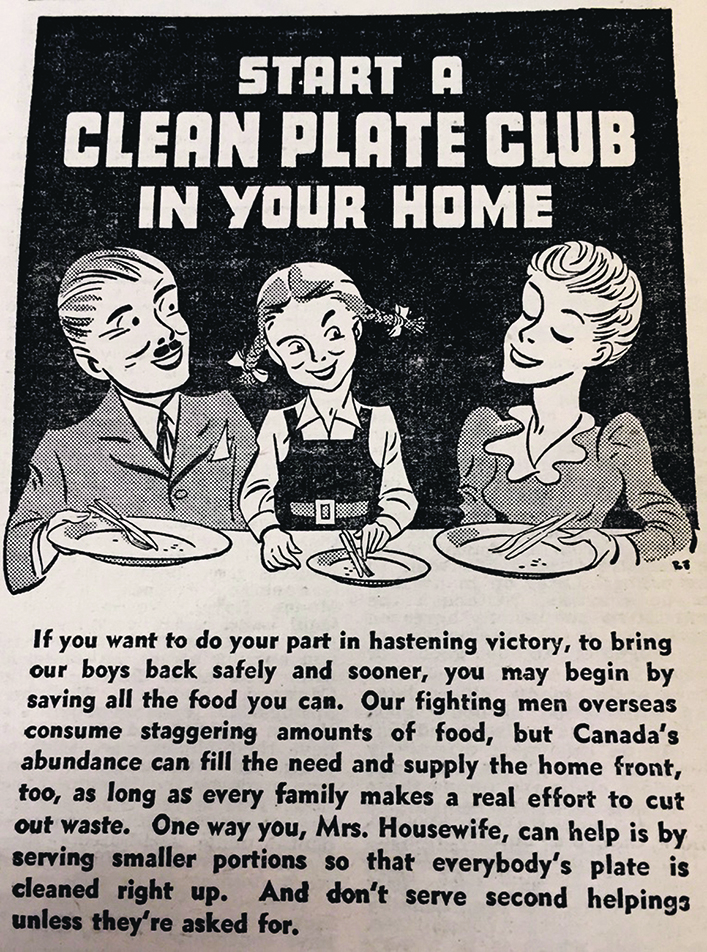
To reduce the effect of food rationing and shortages, a government advertising campaign promoted the idea of not wasting food by cooking only what was needed, eating smaller portions and eating all that was on your plate. It was called the Clean Plate Club. April 13, 1944.
More ships, more tea, rations increase
A wonderful announcement in the Sept. 9, 1943, Western Producer was that due to more ships getting through, more tea was available and “the government is able to raise our allowance of tea a full third. Tea-lovers will rejoice at this happy turn of events for now they can get half pound of their favourite tea every six weeks instead of every eight weeks.”
Cookbooks popular
More than 200 cookbooks were printed during the war to share menu ideas, food-stretching and ingredient substitution tips and recipes. The government, food industry and home economists produced many, but the majority were published by church groups, charities and local community organizations. Readers often submitted their recipes to newspapers and magazines as well. The United Farm Women in Saskatchewan produced such a cookbook with submissions from its members, The Western Producer helped market this cookbook. July 3, 1941.
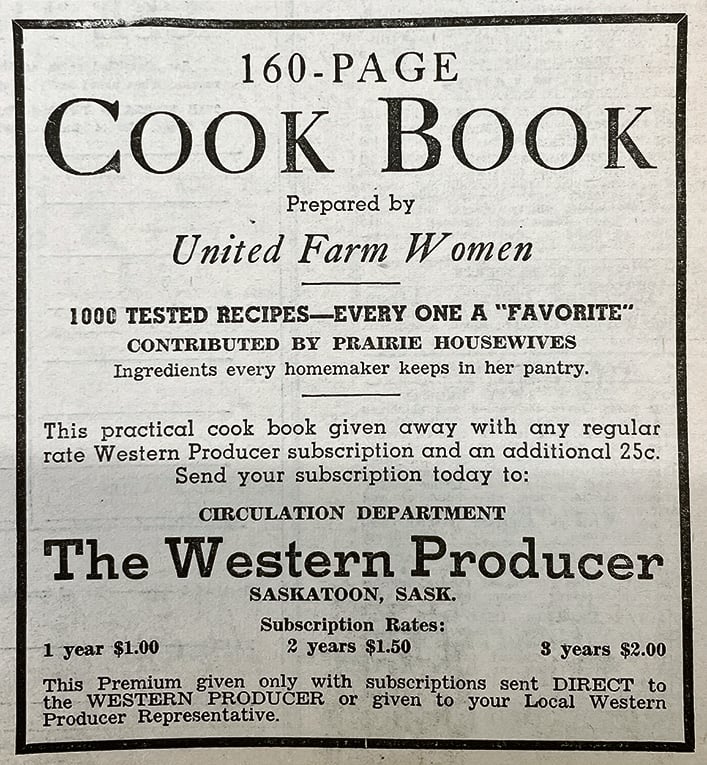
Betty Ann Deobald is a home economist from Rosetown, Sask., and a member of Team Resources. Contact: team@producer.com.


